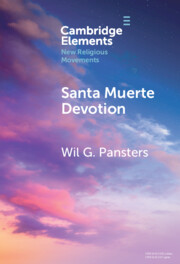Element contents
Santa Muerte Devotion
Published online by Cambridge University Press: 24 February 2025
Summary
- Type
- Element
- Information
- Online ISBN: 9781009446631Publisher: Cambridge University PressPrint publication: 27 March 2025
References
- 1
- Cited by

